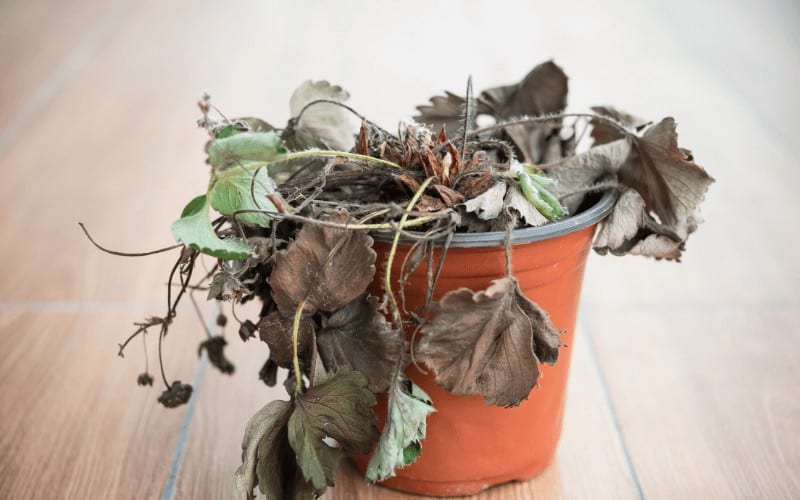Various reasons could account for your plant dying, such as too much sunlight, overwatering, underwatering, pests, lousy garden soil, lack of fertilizer, and so much more.
Identifying a dying plant is relatively easy and straightforward. Once your plant loses its usual bounciness and has limp leaves and a shriveled stem, the chances are that your plant is dying.
You will probably want to do anything within your power to revive your dying plant, which begets the question, how long does it take to revive a dead plant? Basically, it will take roughly 4 weeks to restore a dying plant to a state of normalcy.
Read more on essential guidelines on reviving a dying plant.
Table of Contents
Signs That Your Plant Is Dying
House plants are enjoying a new surge in popularity and with good cause. Incorporating nature into your household or workplace is always a welcome development.
Caring for houseplants demands some responsibility, and without adequate care, you might have in your hand a dying houseplant.
Sometimes, ignorance can lead to a dying plant. For instance, overwatering your plant may harm the plant.
There are some telltale signs and symptoms that will help you ascertain if your plants are dying.
1. Wilted, Brown or Yellow Leaves
When your houseplant starts to lose its vigor by having yellow and brown leaves, the probability is that you are overwatering the poor plant.
To rectify the situation, keep the plant out of direct sunlight and water lightly. If possible, you can repot the plant in fresh soil.
2. Dry Brown and Droopy Leaves
Underwatering your plant may account for dry and crispy leaves. Water your plant more frequently if you notice this sign and place it in a humid area out of direct sunlight.
3. Dark or Bleached Patches
All plants respond differently to the sun. Some plants thrive in full sunlight, while others can't handle the stress of direct sunlight.
If your plant has dark and bleached patches, the chances are that your plant is not responding well to sunlight. Move your plant to a damp spot, preferably a location with a humid temperature.
4. Small Pale Leaves
While some plants respond well to sunlight, others don't. Before growing any plant, it's best to do adequate research about the plant.
Small pale leaves may be a result of your plant not getting sufficient sunlight. Move your plant to a spot with direct sunlight and water regularly.
5. Deformed or Discolored Leaves
Plants are the perfect place for common pests to invade. Holes in leaves, rolled up leaves, and folded leaves all points to pest invasion on your plant.
Thankfully, most pests are easy to remove. A simple addition of insect-repelling plants around your other plants will keep pests far away.
How Long Does It Take to Revive A Dead Plant?

Consistently following the steps discussed in this post will effectively improve the health of your plant. With enough patience, in no time, your plant will return to normal. It will roughly take 4 weeks to revive your dying plants.
How To Revive Your Dying Plants
Growing indoor plants is not as easy as you think. But the advantages of growing indoor plants are quite numerous.
Some indoor plants can soothe allergies, while some other plants are used for beautification purposes.
Now, it's sad to watch your plant dying, and you might want to throw the plant away and give up. Before you give up, try the steps outlined below to revive your dying plant. The chances are that your plant needs adequate care to flourish.
- Repot your plant: revitalize your plant using a high-quality indoor plant potting mix to your plant.
- Trim your plant: trim out any damages to the roots, leaves, and stem.
- Move your plant: your plant might be getting too much or too little sunlight. You should know if your plant is getting too much or too little sunlight from the symptoms of dying plants discussed above.
- Water your plant: your plant might be dehydrated and needs water. When watering, take care not to overwater.
- Feed your plant: the right fertilizer may give your plant the much-needed boost to flourish.
Conclusion
A dying plant doesn't mean that all hope is gone. Most people make the mistake of dousing their plants with extra doses of water, but this practice may harm the plant.
Following all the guidelines outlined in this post will restore it to its natural balance in no time. Remember that it may take time for your plant to return to its normal state.
But at intervals, you may find yourself asking, how long does it take to revive a dead plant? With patience and consistency, your plant will return to normalcy.




